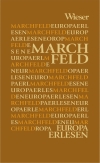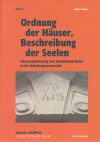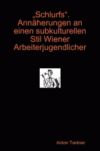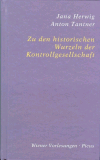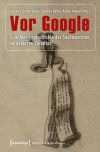Robertson zur Identitätsfeststellung Mitte 19.Jh
Frisch erschienen:
Robertson, Craig: Four Documents, a Non-Citizen, and a Diplomatic Controversy: The Documentation of Identity in the Mid-Nineteenth Century, in: Journal of Historical Sociology, 22.2009/4, S.476 - 496.
DOI: 10.1111/j.1467-6443.2009.01366.x
Abstract:
A forgotten diplomatic controversy centered on the claim to U.S. protection by a yet-to-be-naturalized citizen is analyzed to offer insights into the mid-nineteenth century understanding of the status and function of the documentation of individual identity. It makes clear the documentation of identity had a contested and gradual development. Documentation was contested in that people (both officials and members of the public) struggled to understand how it was that a document identified a person. This uncertainty centered not only on who had the authority to document identity, but how that authority was represented on a document. Beyond its mid-nineteenth century and U.S. focus this essay is intended to provide the context for an understanding of the administrative, bureaucratic, and social developments that had to occur before identification documents could play a pivotal role in the development of the twentieth century state. In this way it suggests that official identification is an important object of analysis for debates about the articulation of information and governing in state formation.
Robertson, Craig: Four Documents, a Non-Citizen, and a Diplomatic Controversy: The Documentation of Identity in the Mid-Nineteenth Century, in: Journal of Historical Sociology, 22.2009/4, S.476 - 496.
DOI: 10.1111/j.1467-6443.2009.01366.x
Abstract:
A forgotten diplomatic controversy centered on the claim to U.S. protection by a yet-to-be-naturalized citizen is analyzed to offer insights into the mid-nineteenth century understanding of the status and function of the documentation of individual identity. It makes clear the documentation of identity had a contested and gradual development. Documentation was contested in that people (both officials and members of the public) struggled to understand how it was that a document identified a person. This uncertainty centered not only on who had the authority to document identity, but how that authority was represented on a document. Beyond its mid-nineteenth century and U.S. focus this essay is intended to provide the context for an understanding of the administrative, bureaucratic, and social developments that had to occur before identification documents could play a pivotal role in the development of the twentieth century state. In this way it suggests that official identification is an important object of analysis for debates about the articulation of information and governing in state formation.
adresscomptoir -
Kontrolle - Do, 24. Dez. 2009, 12:17
